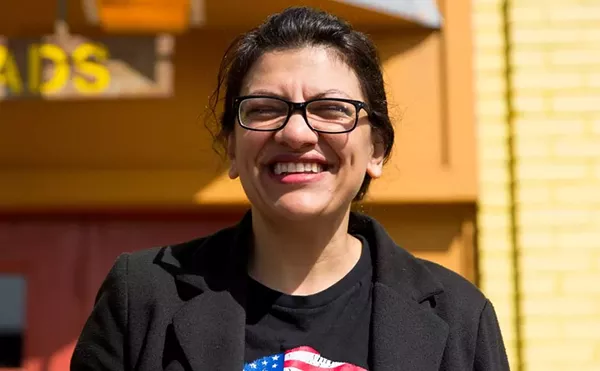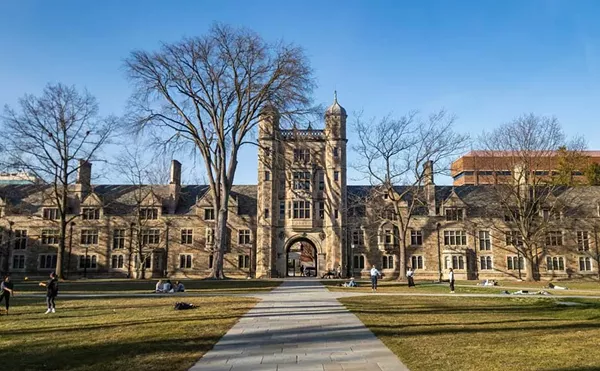All-by-my-self
So here comes another election. And the Bush-whackers are telling us to go it alone as much as possible. You know, pick the individual solution every time: private vouchers over public education, individual Social Security investments over collective development of the system, case-by-case solutions to health care over nationally guaranteed coverage, and personal philanthropy over public support for the arts.
Well, if you’ve got a bundle of cash at your disposal, that’s probably the road you’ve always taken: each pastime a game of solitaire, every tune a solo, every dream a date with Miss Michigan. “Gimme an ‘I’” — “I” roars the majority of one, and just like that the cheer’s over.
The individual solution to arts funding is a fantasy of personal power: Wealthy patron bestows obscenely large sums on struggling artists or institutions, for which they are obsequiously grateful. Patron gets to say “what it is!” — what gives and what goes. And the needy dance a little jig of satisfaction. Until the next pangs of funding hunger.
Strange fruit
The trouble with this vision of solitary happiness is that it only works for the wealthy. And by assuming that group approaches are unthinkable, by propagating that mantra of illusion, “get big government off my back!,” it obscures the only real solution to the arts funding dilemma.
What is wrong with nothing but private donations to the arts? What’s the problem with having such major institutions in Oakland and Wayne counties as the Detroit Zoo or Detroit Institute of Arts rely on individual contributions and paid admissions for their operating funds?
Well, first of all, benevolence easily becomes a game of influence peddling, and a too-heavy reliance on paid admissions quickly limits programming to what’s “popular,” as opposed to what might be innovative, thought-provoking, challenging, etc.
And the institutions themselves have finally realized that the old saying needs an update: “United we grow; divided we struggle.”
A is for arts
The people of Oakland and Wayne counties — in the midst of a growth surge in economic and cultural development that we haven’t seen before in our lifetimes — are faced with a simple choice. Do we leave the development of educational and arts programming in our communities to the whims of powerful individuals, or do we assure, over the next 10 years, a regular source of support for the following quality-of-life institutions: Henry Ford Museum & Greenfield Village, Music Hall, Cranbrook Institute of Science, Meadow Brook Hall, WTVS Public Television, Cranbrook Art Museum, Detroit Science Center, Holocaust Memorial Center, Cranbrook House & Gardens, Detroit Zoological Institute, Meadow Brook Theatre, Detroit Historical Museum, Detroit Symphony Orchestra, Museum of African American History, Michigan Opera Theatre, Detroit Institute of Arts, and Center for Creative Studies?
If we adopt Proposal A on November 7, the 0.5 mills of added property tax will generate $44 million for arts and culture programming in the two-country area in the 2001 calendar year alone. Two thirds of this amount — about $29 million — would be allocated to the 17 institutions listed above, to assist them in improving their educational outreach, their programming stability and their enrichment of our lives. The remaining third — about $15 million — would be distributed to other local cultural and recreational activities by the communities in which the millage is raised. And so on for 10 years.
All together now
With more galleries, theaters, performance spaces and community centers opening in the two-country area, with more people from around the country choosing metro Detroit as an attractive place to live and raise children, we have nothing to lose but the illusion that life is a game of solitaire. Other American cities — Denver, St. Louis, Salt Lake City, Chicago and Kansas City — have come to this same conclusion and developed regional funding initiatives for their cultural institutions.
To bring it all down to an unthreatening bottom line: 0.5 mills added to our property taxes translates into the owner of a $150,000 home paying $37.50 a year (or less) in extra assessments. That’s the price of a night out at the movies for a family of four, plus Twizzlers and popcorn. Refusing that kind of help to what is, basically, ourselves is just being penny-wise and pound-foolish. It’s falling for the old “me-first” ideology, even when it hurts us and (especially) our children in the short, medium and long runs.
On Election Day, we’ve got the chance to take a little control over our own futures, rather than leaving the funding choices up to the George Steinbrenners and Alfred Taubmans of the world. Remember, yes on Proposition A means arts and culture support from everybody for everybody.
The Hot & the Bothered was written and edited by George Tysh. E-mail him at [email protected]





